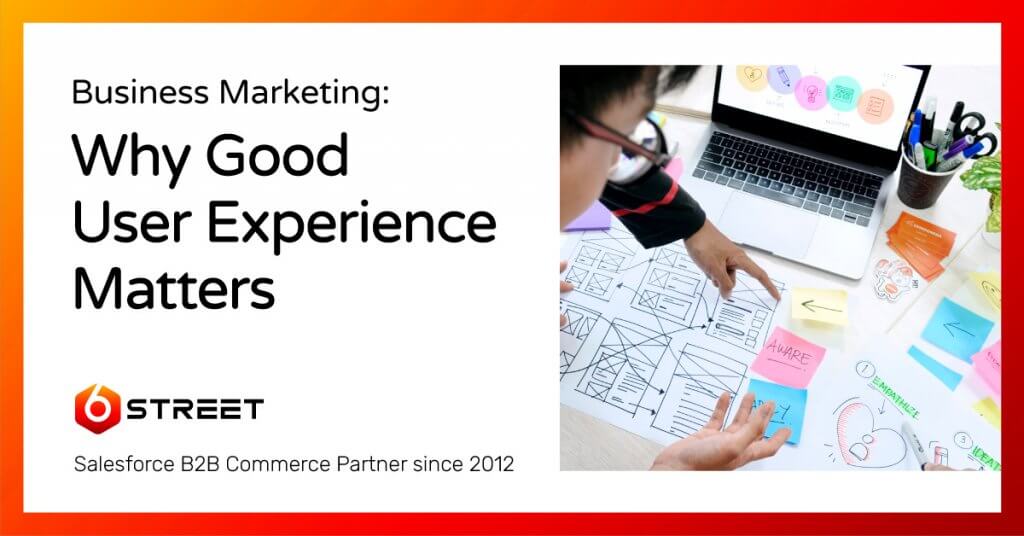UX design is no longer just a buzzword. It’s become a pivotal way to engage customers and define your brand. When your customers feel good about the product you provide, that generates customer loyalty (obviously valuable).
Whether your business offers products or services, it’s almost guaranteed that you can benefit from implementing a good user experience design. It’ll make life easier for your consumers, and increase return and referral business.
So, what actually is UX design, and why has it become so important? Read on to learn how your business can benefit from great UX design.
What is User Experience (UX)?
UX design is a complex and growing field. Broken down to its core though, it means optimizing the experience for the end-user. Simply put, UX designers make products and services easier for people to use.
Based on user research and analysis, UX designers create experiences that work best for both the user and the business’s goals. Great UX design creates a symbiotic relationship between consumers and producers.
Don’t misunderstand, however: user experience design doesn’t apply only to a single product. The Nielsen Norman Group defines UX as “all aspects of the end-user’s interaction with the company, its services, and its products.” That’s why it’s important to consider these principles throughout your business.
UX Design Principles
Your business may already incorporate some aspects of UX design. Here are some core principles you may want to expand upon.
User testing draws conclusions based on real-world data. It helps reveal how users actually use your product/service, rather than how you might predict they do. Using this to inform your design can create an easy-to-use end product.
Hierarchy allows users to easily navigate your design. This is applicable everywhere, but mostly in digital design (think: mobile or web design).
Consistency allows users to quickly learn how to use your product. The more similar the design is to other products of its category, the more intuitive it’ll be for users.
Accessibility takes into account different users’ abilities, whether affected by context or disability. For example, if your product is aimed towards drivers (say, a navigation app), you’ll want to include a speech option.
There’s a lot more that goes into UX design, including user psychology, visual design, software development, and more. You can explore these concepts more deeply with this comprehensive guide to user experience.
Why is User Experience Design Important?
Prioritizing customers over production has recently become an important trend in marketing and business strategy. In fact, 89% of consumers say they’d actually switch to a competitor if they had a bad user experience. With that in mind, UX design is a great way to increase customer retention, referrals, and repeat business.
So what actually incentivizes businesses to prioritize UX design? It saves money, satisfies customers, and improves brand reputation. Read on for more benefits of an optimized UX design, and how your business can harness them.
Benefits of Great UX Design
An intuitive website UX helps increase conversion rates. With the average human attention span lasting only about eight seconds, it’s vital that the design holds users’ attention long enough to complete the call to action.
You’ll also maximize return on investment (ROI) when it comes to paid advertising campaigns. Analyzing the consumer journey will help you identify where users abandon the process. Once you know where they log off, you can incorporate factors to keep their attention.
Incorporating good UX also helps with search engine optimization (SEO). Search engines prioritize sites that users spend more time with. Therefore, a great user experience encourages search engine algorithms to rank your site higher.
As we’ve said, you’ll also increase customer retention and loyalty. When users can easily access your product, explore your content, and use your services, they’re more prone to like them. A more enjoyable user experience leads to more positive brand perception, increasing loyalty.
If you’ve ever heard of WOM (word-of-mouth) marketing, you know it’s highly influential in consumer decisions. A great UX design is a great way to ensure your customers share solid social proof. When customers have a good experience, they’re eager to share it.
Positive UX will also help differentiate your product, service, or brand from the competition. By providing a more accessible experience than your competitors, you’ll draw more customers. You’ll also provide something unique: a useful, easy-to-use product for your target niche.
No UX Design Experience? No Problem
The ROI for investments in UX design can be anywhere from $10 to $100 on the dollar. This is a massive return. So what if you don’t know the first thing about UX design?
Hiring a user experience consultant can take the pressure off. They’ll perform an audit of your current UX, and identify pain points that can be improved.
There are plenty of UX consultants out there, so how can you choose? You’ll want to pick someone who can tie the UX back to your company’s goals. They should also have experience in other areas, like marketing or sales, to create a cohesive end product.
Incorporating Great UX Design
User experience design doesn’t just apply to products and services. Streamlining your employees’ workflow is also a great way to optimize your business. There are opportunities to apply UX design principles in almost every department of your business.
What if there was a way to simultaneously improve your user experience and employee workflow? Luckily, there is. Learn how your business can benefit from comprehensive brand development services from 6Street.
